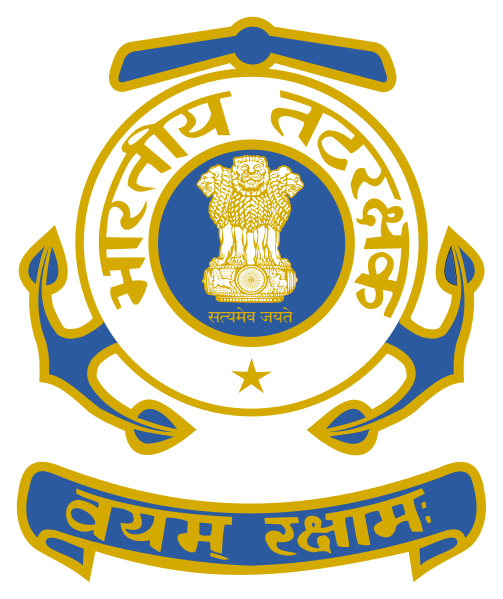Indian Economy
Table of Contents
The Indian economy is one of the fastest-growing and most diverse economies in the world. With a population of over 1.4 billion people, it is characterized by a mix of traditional village farming, modern agriculture, handicrafts, a wide range of industries, and numerous services. This in-depth analysis explores the various facets of the Indian economy, from its historical roots to its current trends and future prospects.
Historical Overview
Ancient and Medieval Periods
India has a rich economic history dating back to the ancient and medieval periods. During the ancient times, India was known for its agricultural wealth, thriving trade routes, and bustling markets. The medieval period saw the rise of prominent empires like the Mughal Empire, which further expanded India’s economic prowess through agriculture, crafts, and extensive trade networks.
Colonial Period
The colonial period under British rule had a profound impact on the Indian economy. The British implemented policies that led to the deindustrialization of traditional Indian industries, especially textiles. The focus shifted towards raw material extraction, primarily for export to Britain, which stunted India’s industrial growth.
Post-Independence Era
Post-independence, India adopted a mixed economy model with significant state intervention in the form of central planning. The emphasis was on self-reliance, with key industries nationalized and a focus on import substitution. The Five-Year Plans played a crucial role in guiding economic development during this period.
Economic Reforms and Liberalization
Economic Crisis 1991 and Reforms
The Indian economy underwent a major transformation in 1991 following a severe balance of payments crisis. The government, led by Prime Minister P.V. Narasimha Rao and Finance Minister Dr. Manmohan Singh, introduced sweeping economic reforms. These reforms included liberalization, privatization, and globalization (LPG).
Key Reforms and Their Impact
Liberalization
Liberalization involved reducing government control over industries, deregulation, and allowing greater participation of private entities. This led to increased efficiency and competition in various sectors.
Privatization
Privatization aimed at transferring ownership of state-owned enterprises to the private sector. This move was intended to improve efficiency, productivity, and profitability of these enterprises.
Globalization
Globalization opened up the Indian economy to international markets, encouraging foreign direct investment (FDI) and promoting exports. It also exposed Indian companies to global competition, driving innovation and growth.
Agricultural Sector
Importance and Contribution
Agriculture is the backbone of the Indian economy, employing about 50% of the workforce and contributing around 15-18% to the GDP. India is one of the world’s leading producers of rice, wheat, pulses, fruits, and vegetables.
Green Revolution and Its Impact
The Green Revolution of the 1960s and 1970s introduced high-yielding varieties of seeds, chemical fertilizers, and advanced irrigation techniques. This revolution significantly increased agricultural productivity and food grain production.
Challenges in the Agricultural Sector
Despite its importance, the agricultural sector faces several challenges, including fragmented landholdings, inadequate infrastructure, dependence on monsoon rains, and limited access to modern technology and credit facilities.
Industrial Sector
Key Industries
India has a diverse industrial sector encompassing traditional industries like textiles and handicrafts to modern industries such as automotive, pharmaceuticals, and information technology (IT).
Make in India Initiative
Launched in 2014, the Make in India initiative aims to transform India into a global manufacturing hub by encouraging domestic and international companies to manufacture in India. This initiative focuses on improving infrastructure, fostering innovation, and enhancing skill development.
Challenges in the Industrial Sector
The industrial sector faces challenges like inadequate infrastructure, regulatory bottlenecks, labor market rigidities, and competition from cheaper imports. Addressing these issues is crucial for sustaining industrial growth.
Services Sector
Growth and Contribution
The services sector is the largest contributor to India’s GDP, accounting for over 55%. This sector includes IT and IT-enabled services, banking, insurance, real estate, hospitality, and tourism.
Information Technology and BPO
India is a global leader in the IT and Business Process Outsourcing (BPO) industries. Cities like Bengaluru, Hyderabad, and Pune are major IT hubs, attracting significant foreign investment and generating employment.
Challenges in the Services Sector
While the services sector has seen robust growth, it faces challenges such as skill gaps, infrastructure deficiencies, and regulatory hurdles. Ensuring sustained growth requires addressing these issues and promoting service sector innovation.
Infrastructure Development
Transportation
India has an extensive transportation network, including roads, railways, airports, and seaports. The government has initiated several projects like the Bharatmala Project and Sagarmala Project to enhance transportation infrastructure.
Energy
India is the third-largest producer and consumer of electricity in the world. The energy sector includes traditional sources like coal, oil, and natural gas, as well as renewable energy sources such as solar, wind, and hydro power.
Digital Infrastructure
Digital infrastructure has seen rapid development with initiatives like Digital India, aiming to improve internet connectivity, digital literacy, and e-governance services.
Financial Sector
Banking and Financial Services
India’s banking sector comprises public sector banks, private sector banks, foreign banks, and regional rural banks. The sector has undergone significant reforms to improve financial inclusion, credit availability, and operational efficiency.
Stock Markets and Investment
India has well-developed stock markets, with the Bombay Stock Exchange (BSE) and National Stock Exchange (NSE) being major platforms. The growth of mutual funds, insurance, and pension sectors has broadened the investment landscape.
Challenges in the Financial Sector
The financial sector faces challenges like non-performing assets (NPAs), regulatory compliance, and ensuring financial inclusion for underserved populations.
Trade and Foreign Investment
Export and Import Trends
India’s trade policy aims to promote exports and diversify export markets. Major export items include textiles, jewelry, engineering goods, and software services. Imports primarily consist of crude oil, gold, electronics, and machinery.
Foreign Direct Investment (FDI)
FDI plays a crucial role in economic development by bringing in capital, technology, and managerial expertise. India has liberalized its FDI policies across various sectors to attract foreign investment.
Challenges in Trade and Investment
Challenges include trade deficits, protectionist policies, and global market volatility. Strengthening trade agreements and improving the business environment are essential for boosting trade and investment.
Economic Policies and Governance

Fiscal Policy
India’s fiscal policy focuses on revenue generation through taxation and efficient public expenditure. The Goods and Services Tax (GST) is a significant reform aimed at creating a unified tax system and enhancing revenue collection.
Monetary Policy
The Reserve Bank of India (RBI) manages monetary policy to control inflation, ensure financial stability, and promote economic growth. Tools include interest rate adjustments, open market operations, and reserve requirements.
Economic Governance
Good governance practices, transparency, and effective regulatory frameworks are crucial for economic stability and growth. Initiatives like the Insolvency and Bankruptcy Code (IBC) aim to streamline the resolution of distressed assets and improve the ease of doing business.
Social and Economic Challenges

Poverty and Inequality
Despite significant economic progress, India still faces challenges of poverty and inequality. Efforts to reduce poverty include social welfare schemes, employment programs, and targeted subsidies.
Unemployment
Unemployment, particularly among the youth, remains a critical issue. Skill development initiatives, vocational training, and job creation in emerging sectors are essential to address this challenge.
Environmental Sustainability
Balancing economic growth with environmental sustainability is crucial. India is committed to sustainable development goals (SDGs) and has taken steps to promote renewable energy, reduce carbon emissions, and conserve natural resources.
Future Prospects
Economic Growth Projections
India’s economy is projected to grow steadily in the coming years, driven by domestic consumption, investment, and favorable demographics. The focus on infrastructure development, digitalization, and skill enhancement will play a pivotal role.
Innovation and Technology
Innovation and technology adoption are key drivers of future economic growth. Investments in research and development (R&D), startups, and emerging technologies like artificial intelligence (AI) and blockchain will be crucial.
Global Integration
India’s integration into the global economy will continue to deepen through trade agreements, strategic partnerships, and active participation in international organizations like the World Trade Organization (WTO) and the G20.
Conclusion
The Indian economy is a complex and dynamic entity, characterized by its diversity and resilience. From agriculture to industry to services, each sector plays a vital role in shaping the country’s economic landscape. The journey from a colonial economy to a global powerhouse is a testament to India’s economic potential and adaptability. While challenges remain, the future prospects of the Indian economy are promising, driven by robust policies, innovation, and a young and dynamic population.
FAQs
What are the major sectors of the Indian economy?
The major sectors of the Indian economy are agriculture, industry, and services. The services sector is the largest contributor to GDP, followed by industry and agriculture.
What was the impact of the 1991 economic reforms on India?
The 1991 economic reforms liberalized the Indian economy, promoting privatization and globalization. These reforms led to increased economic growth, foreign investment, and industrial development.
How important is agriculture to the
Indian economy?
Agriculture is crucial, employing about 50% of the workforce and contributing around 15-18% to the GDP. It is a major source of livelihood and food security.
What challenges does the Indian economy face?
The Indian economy faces challenges such as poverty, unemployment, infrastructure deficits, regulatory bottlenecks, and environmental sustainability.
What are India’s future economic prospects?
India’s future economic prospects are positive, driven by factors like robust economic policies, technological innovation, infrastructure development, and a favorable demographic profile.





